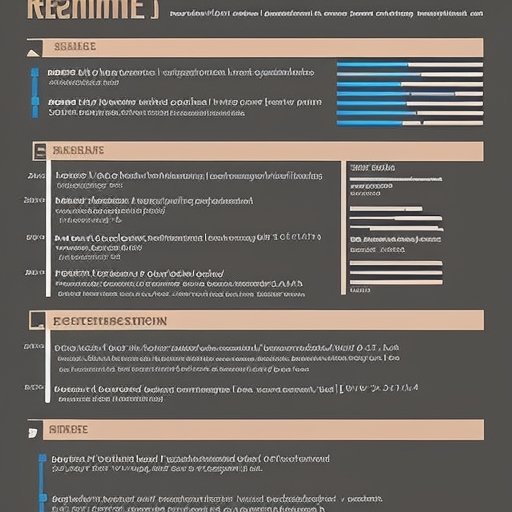Managing Your Anger. Tips and steps for professionals
Managing Your Anger
The workplace is full of triggers for anger. These triggers include emotional pressure, complex relationships, diverse communication styles, and high-stakes risks and rewards.
Workplace anger is a normal and healthy reaction when circumstances are unjust, personal rights aren't respected, promises are broken, or expectations aren't met. When people work together, conflicts inevitably arise. Different emotional makeups, biases, business styles, expectations, and cultural norms can all trigger angry feelings. But while many people are adept at recognizing what precipitates anger in coworkers, they often fail to cope with their own triggers. This can result in inappropriate behavior such as outbursts, overreactions, misplaced blame, or excessive self-criticism.
Expressing your anger inappropriately can cause you to do and say things that you'll regret. You can cause hurt feelings and engender resentment that can last a long time. In the long run, this type of venting behavior can tarnish your reputation and professional image. This is why it's important to be aware of your own anger triggers and take steps to manage them. So even if you consider yourself a calm and rational person, it's vital to have a plan or strategy in place for managing your own anger. If you can learn to manage your anger appropriately, it can be a tool for positive problem-solving and conflict resolution.
Steps for managing your anger
Anger is one of the most complex feelings that you'll ever experience. Anger has a strong emotional component, but it's more than just an instinctive or conditioned response.
Anger also has an intellectual component. Once a trigger stimulates your anger, the mind interprets the situation and judges the appropriate response. This is why people respond so differently to the same anger triggers. Taking steps to deal with both the emotional and intellectual components of your anger will help you manage it.
There are four basic steps that you can take to manage your anger appropriately. The first step is to make yourself less susceptible to anger. The second step is recognize how to calm downwhen you start to feel angry. The third step is to analyze the situation logically, and the fourth step is to express your anger appropriately.
Emotional response
The first step in managing your anger is to make yourself less susceptible to it. It isn't possible to completely avoid stressors or situations that make you angry. But there are things you do have some control over. You can manage your environment, keep a positive outlook, and make sure to take care of yourself.
It's important to keep a positive outlook. Expecting things to go wrong can turn out to be a self-fulfilling prophecy. The anticipation of something negative happening and making you angry can be a stressor in itself.
Anger is easier to cope with when you take care of yourself. If you don't feel well, you're more likely to succumb to your anger triggers. Even small annoyances can provoke a reaction when you're tired, hungry, stressed, or ill.
The second step in managing your anger is to calm down. When you recognize that you're in danger of losing your temper, you can regain control by getting away from the stressful situation, and by using simple calming exercises.
Intellectual response
The third step in managing your anger is to analyze the situation logically. This is an important step toward using intellectual reasoning to manage emotional self-control. Strategies for analyzing the situation logically include using cognitive restructuring, staying away from absolutes, and developing task orientation.
One useful strategy for analyzing anger logically is cognitive restructuring. This approach involves examining your ingrained reactions to anger triggers in order to change your behavior.
Because anger is a strong emotional response, reactions can easily escalate into irrational behavior. Rarely has swearing, yelling, crying, or punching a wall ever solved a problem, yet these behaviors can happen with someone whose anger has overtaken rational thought.
In essence, cognitive restructuring uses logic to deal with anger, by intellectually reinterpreting or reframing the stressful situation to produce a more appropriate reaction. This allows you to substitute positive responses for negative ones.
Another strategy for analyzing the situation logically is to stay away from absolutes when you're responding to anger triggers. Absolutes are statements with words like "always" or "never" that imply total fault or place total blame. When you're dealing with another person, using absolutes provokes defensiveness because these statements aren't truths, but products of your own subjective perspective, imagination, and reasoning.
A final strategy for analyzing the situation logically is to develop task orientation. This involves concentrating on what goals need to be accomplished to deal with your anger.
The fourth step in managing your anger is to express your anger appropriately. You can do this by determining what you want to accomplish, and communicating your anger in the right way. Once you've determined the reason for your anger you can express your feeling appropriately.
Task orientation means asking yourself the type of questions that help you define your anger and develop a positive goal for managing it:
- Who or what triggered my anger?
- What are the underlying emotions of my anger, fear, frustration, and hurt?
- Is there a possibility I may have overreacted?
- Am I focusing my anger on the right target?
- Is there an alternative explanation for the triggering event?
- How can I use my anger in a positive way?
The fourth step in managing your anger is to express your anger appropriately. You can do this by determining what you want to accomplish, and communicating your anger in the right way. Once you've determined the reason for your anger you can express your feeling appropriately.
The questions that you asked yourself when you were developing task orientation will be the basis for examining your anger and determining what you want to accomplish. Of course each situation is different, and so your goal will be different. Perhaps you want to find a way to avoid feeling angry in the future, or maybe you need to confront the person about what's making you angry.
Once you've decided what you want to accomplish, it's time to communicate your anger in the right way. This means choosing your words carefully and talking to the right person, at the right time, and in the right place. When you go to the person, make sure you're clear about what happened to make you angry, how you feel about the situation, what you think needs to be done to resolve the issue, and why it's important that the issue be dealt with. It's also vital to listen to the other person's point of view. You may glean valuable information that can help you resolve an issue or bring about a compromise.
There are four basic steps that you can take to manage your anger appropriately. The first step is to make yourself less susceptible to anger. The second step is recognize how to calm down when you start to feel angry. The third step is to analyze the situation logically, and the fourth step is to express your anger appropriately.
From the blog
View allOther popular blogs
Follow these links to help you prepare for the ACCA exams
Follow these blogs to stay updated on IFRS
Use these formats for day to day operations
- Account closure format
- Insurance claim letter format
- Transfer certification application format
- Resignation acceptance letter format
- School leaving certificate format
- Letter of experience insurance
- Insurance cancellation letter format
- format for Thank you email after an interview
- application for teaching job
- ACCA PER examples
- Leave application for office
- Marketing manager cover letter
- Nursing job cover letter
- Leave letter to class teacher
- leave letter in hindi for fever
- Leave letter for stomach pain
- Leave application in hindi
- Relieving letter format
Link for blogs for various interview questions with answers
- Strategic interview questions
- Accounts payable interview questions
- IFRS interview questions
- CA Articleship interview questions
- AML and KYC interview questions
- Accounts receivable interview questions
- GST interview questions
- ESG Interview questions
- IFRS 17 interview questions
- Concentric Advisors interview questions
- Questions to ask at the end of an interview
- Business Analyst interview questions
- Interview outfits for women
- Why should we hire you question
Popular blogs
Leave application format
Crafting the perfect leave application for any scenario, from personal emergencies to medical leaves, often presents a challenge. To simplify this task, we've assembled an extensive index of leave application formats designed for various circumstances. Our collection is aimed at enhancing the clarity and professionalism of your leave requests. Dive into our index to discover the template that aligns with your specific needs, facilitating a smoother leave application journey.
List of Leave application formats
- Leave application for office
- Leave application for school
- Leave application for sick leave
- Leave application for marriage
- leave application for personal reasons
- Maternity leave application
- Leave application for sister marriage
- Casual leave application
- Leave application for 2 days
- Leave application for urgent work
- Application for sick leave to school
- One day leave application
- Half day leave application
- Leave application for fever
- Privilege leave
- Leave letter to school due to stomach pain
- How to write leave letter










Leave a comment